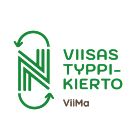Protein-wise Milk Production
ViiMa


High-quality animal protein produced by ruminants is part of Finland’s security of supply. Rapeseed meal, which has a domesticity rate of only 10%, is commonly used in milk production. Ruminants can form the protein they need with just grass-based feeds, but additional protein is used for the economic benefit it brings.
Protein-wise feeding means the utilization of domestic feed materials which are not suitable for human nutrition, and from the point of view of security of supply. Domestic feeds utilized include grass, legumes, and by-products of the grain processing industry.
Protein-wise also means minimizing the use of fossil-based mineral nitrogen fertilizer, which requires the use of legume nitrogen fixation properties in feed production. Legumes are also grown for their protein content, as legumes are assumed to replace supplementary protein in concentrate feed, which, however, only partially holds true. For the sake of securing food supply, it is difficult to completely abandon fossil-based fertilizers, but halving the use of purchased fertilizers is a realistic goal through the cultivation of legumes and the increase of knowledge.
In terms of evaporation losses, nitrogen utilization should reach about a 30% level (milk nitrogen / nitrogen obtained with feed). Nitrogen utilization falls below that limit especially if the crude protein content of the grass is high. To improve utilization, in addition to feeding, the whole farm entity should be taken into account: feed production and the minimization of evaporation and runoff losses. These parts are studied in partnership projects focusing on feed cultivation and environmental issues (N-Fiksu and N-Teho). The Protein-wise Milk Production project focuses on cattle feeding, and together these projects produce a “Wise Nitrogen Cycle” entity.
Despite the long-standing feed value system used in Finland, concepts such as crude protein and metabolizable protein (MP) are confused in guidelines and in practice. Deficiencies in the basic concepts of protein feeding lead to inefficient use of resources. The importance of protein feeding cannot be directly seen at the farm level, as its share of total production is less than 10%. The effects of changes in protein feeding are mixed with other feeding and general herd management. Additional protein feeds is used solely on the basis of an economic perspective, and the level of protein feeding is calculated with optimization programs. The reliable operation and use of these programs is therefore a prerequisite for achieving a profitable result. The production response model operating at the base of the programs must be updated as knowledge increases and the production environment changes.
The goals of Protein-wise Milk Production project are:
1. Reduce overfeeding of protein of dairy cows and improve nitrogen utilization to reduce ammonia losses.
2. Update the production response model used by optimization programs with the latest research information, taking into account especially legumes and extreme feeding situations. In addition, the aim is to guide the limit values used by optimization programs from the perspective of animal health and economics.
3. Produce and convey easily available advisory information on the basics of cattle protein feeding from the perspective of the environment, economy, and animal health.
4. Increase cooperation and enhance information transfer between research, experts and farmers.
The project is coordinated by Natural Resources Institute Finland and project partner is ProAgria Eastern Finland.
The main financier (80%) of the project is the European Agricultural Fund for Rural Development, and funding for the project has been granted as follows:
Luke 225 000 € and ProAgria Itä-Suomi 100 000 €.
